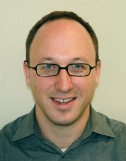Abstract
CAD vendors often maintain that a CAD-based approach driven by CAD designers will expand the use of CAE throughout the engineering organization. Meanwhile, experienced CAE analysts understand that casual CAE users without rigorous engineering knowledge are unlikely to be able to realize meaningful results.
We contend that engineering organizations should deploy CAE to optimize their engineering process, and that CAE should be used as much as practicable. However, success is not guaranteed by mere software acquisition. Engineering organizations must foster an environment where the right users are enabled with CAE and where they are empowered to use CAE at the most influential phases of the design process.
In this presentation, we will describe how CAE can be most effectively used in engineering processes. We will then discuss what types of engineers are likely to produce the most accurate and precise results and what types of tools are appropriate for these use cases. Finally, we will share feedback on when to use and when not to use CAE.
Agenda
Welcome & Introduction
Matthew Ladzinski, NAFEMS North America
Strategies for Deploying Expert and Casual CAE Tools
Blake Courter, SpaceClaim
Q & A Session



